Aspen Fleabane! Erigeron speciosus! Lost in a sea of purple Erigerons, where is the species we need?
It’s month number two of the CLM internship for us here on the Big Horn National Forest. Things are heating up (to nearly record high temperatures in Sheridan, WY , at 105 degrees Fahrenheit!) which means things are approaching full swing up on the mountain, floristically. Several plants that are on our collection list have gone to seed. Many more are now in full bloom—including those in the genus Erigeron.
The botanically uninitiated are faced with the “green wall” when first looking out on a leafy landscape, before learning to differentiate between the many plants that make up the community. With these fleabanes, we’re facing a new frontier—the “purple wall”. In some genera, there are only a few species in the state’s flora. In the genus Monarda, for example, there are only 2 species native to Wyoming, Monarda fistulosa (a plant on our target species list for collection!) and Monarda pectinata. This makes it pretty easy to be confident when we see our Monarda out in the field. Not so with fleabane. There are over 50 species in the Wyoming flora, and almost every single one has bright yellow disk flowers, and purplish to whitish ray flowers.
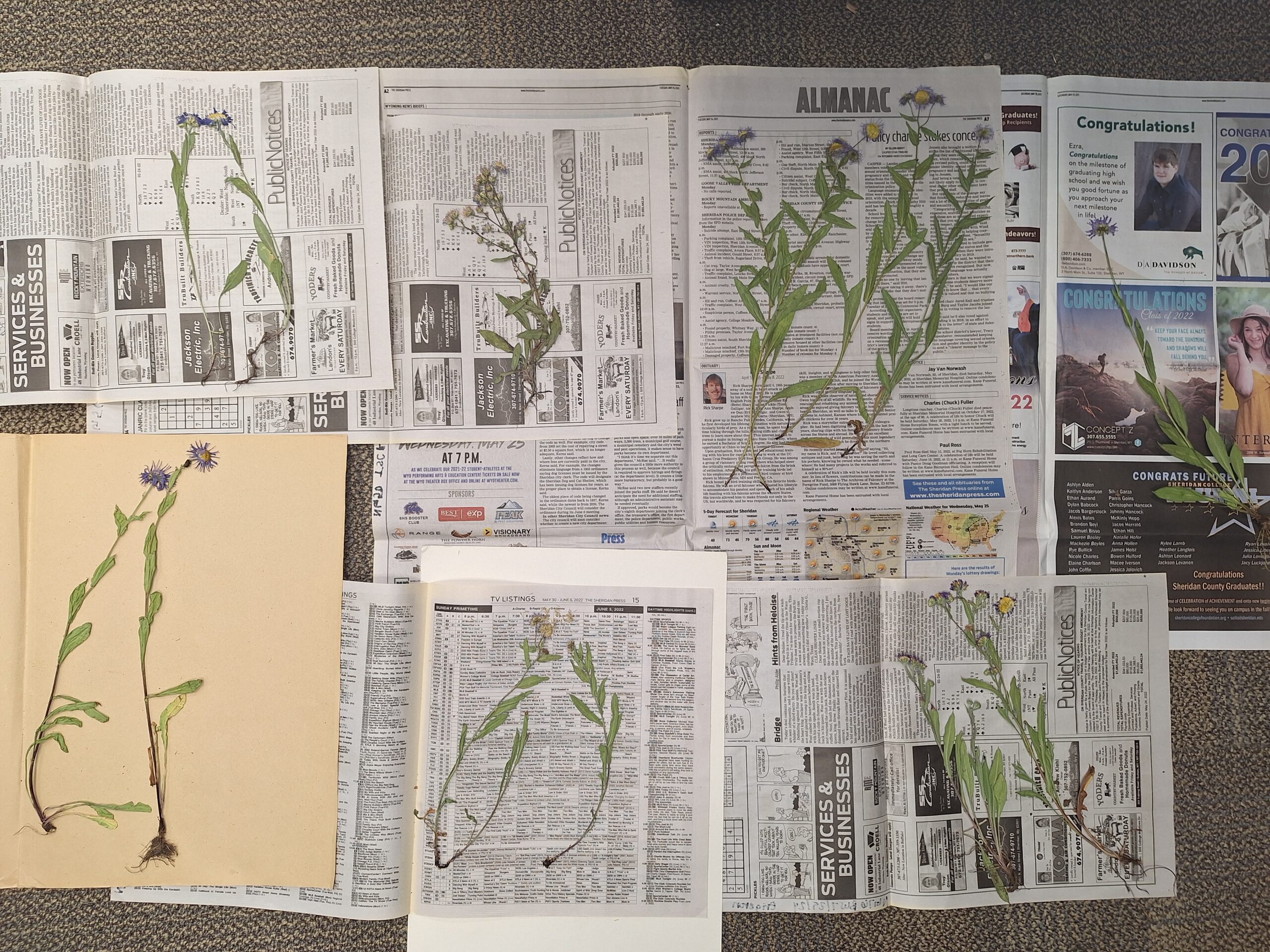
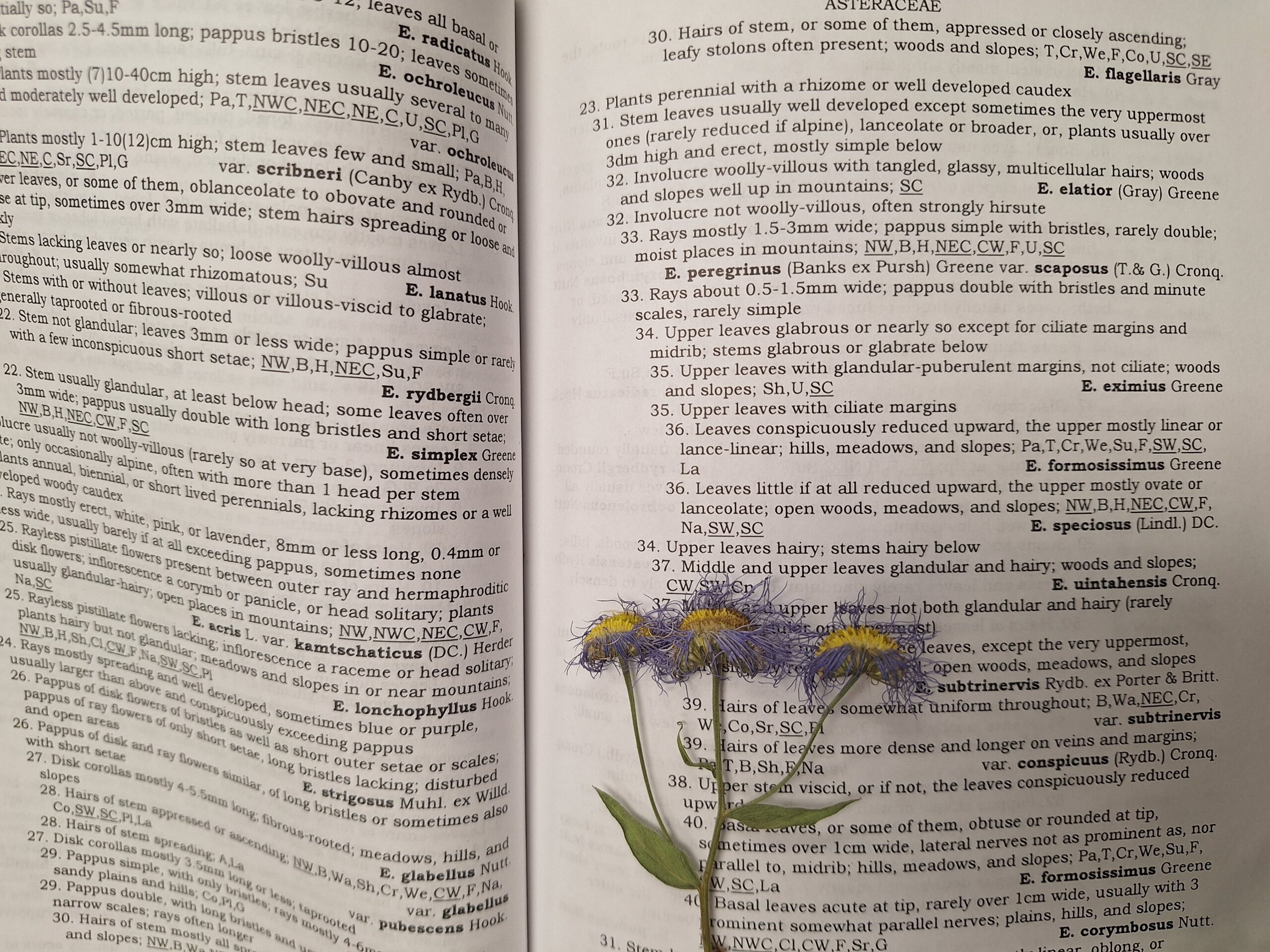
We’ve found that quite a few of the other plant enthusiasts on iNaturalist share our confusion; we’ve showed up on the sites of several iNat observations of Aspen fleabane, and have found several different versions of plants that match the description of yellow disk, purple rays—so which is really Aspen fleabane?
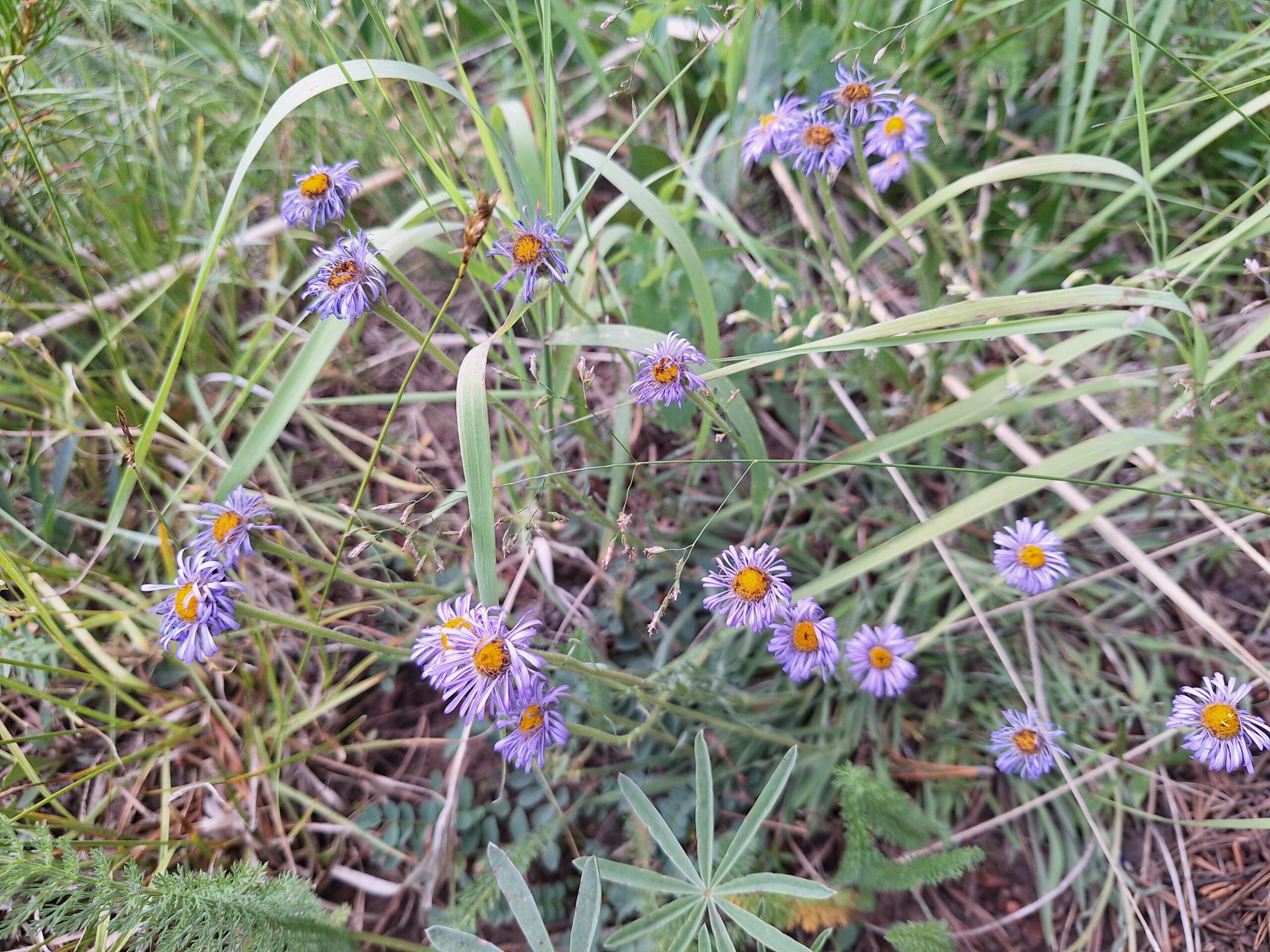
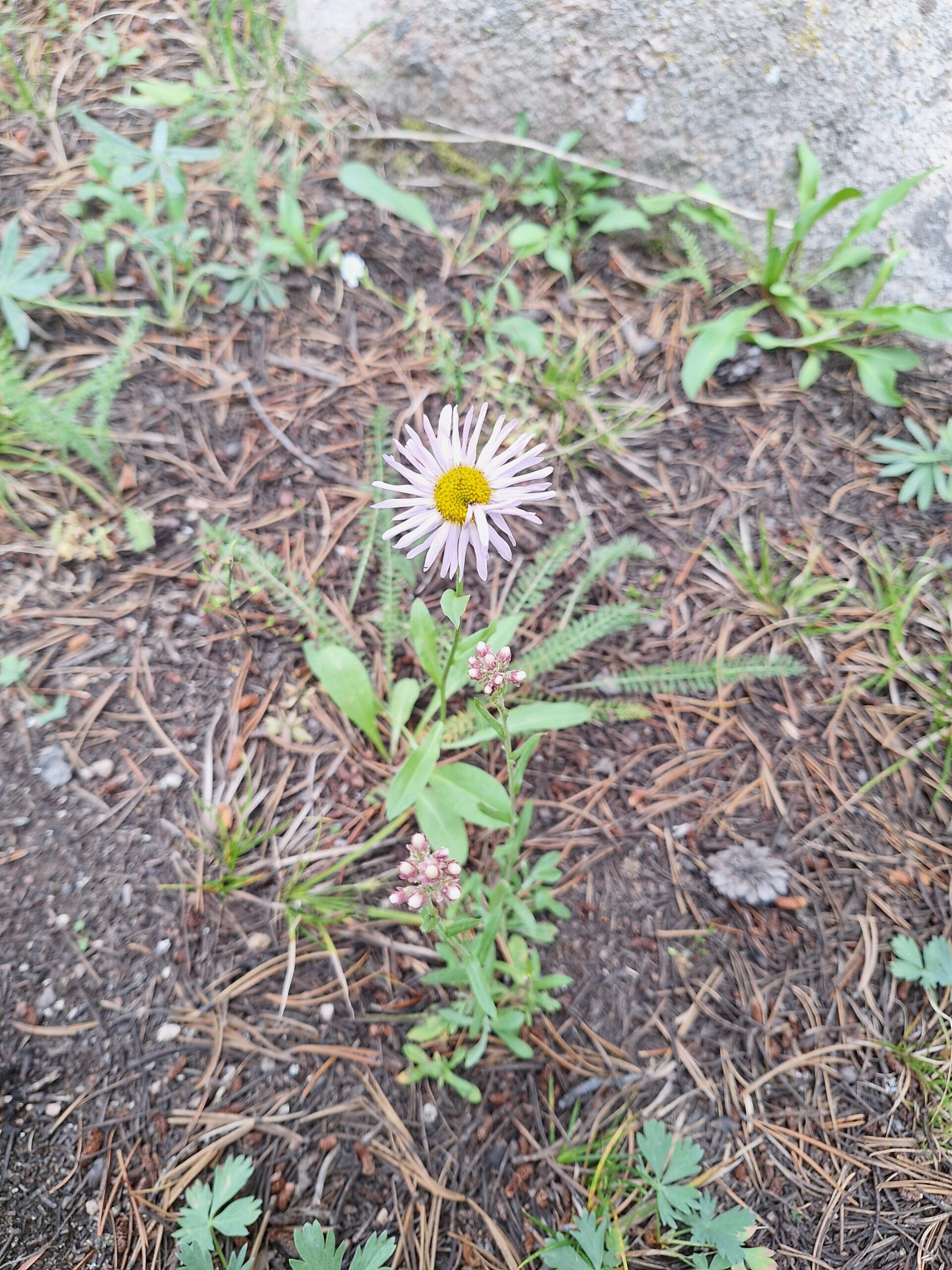
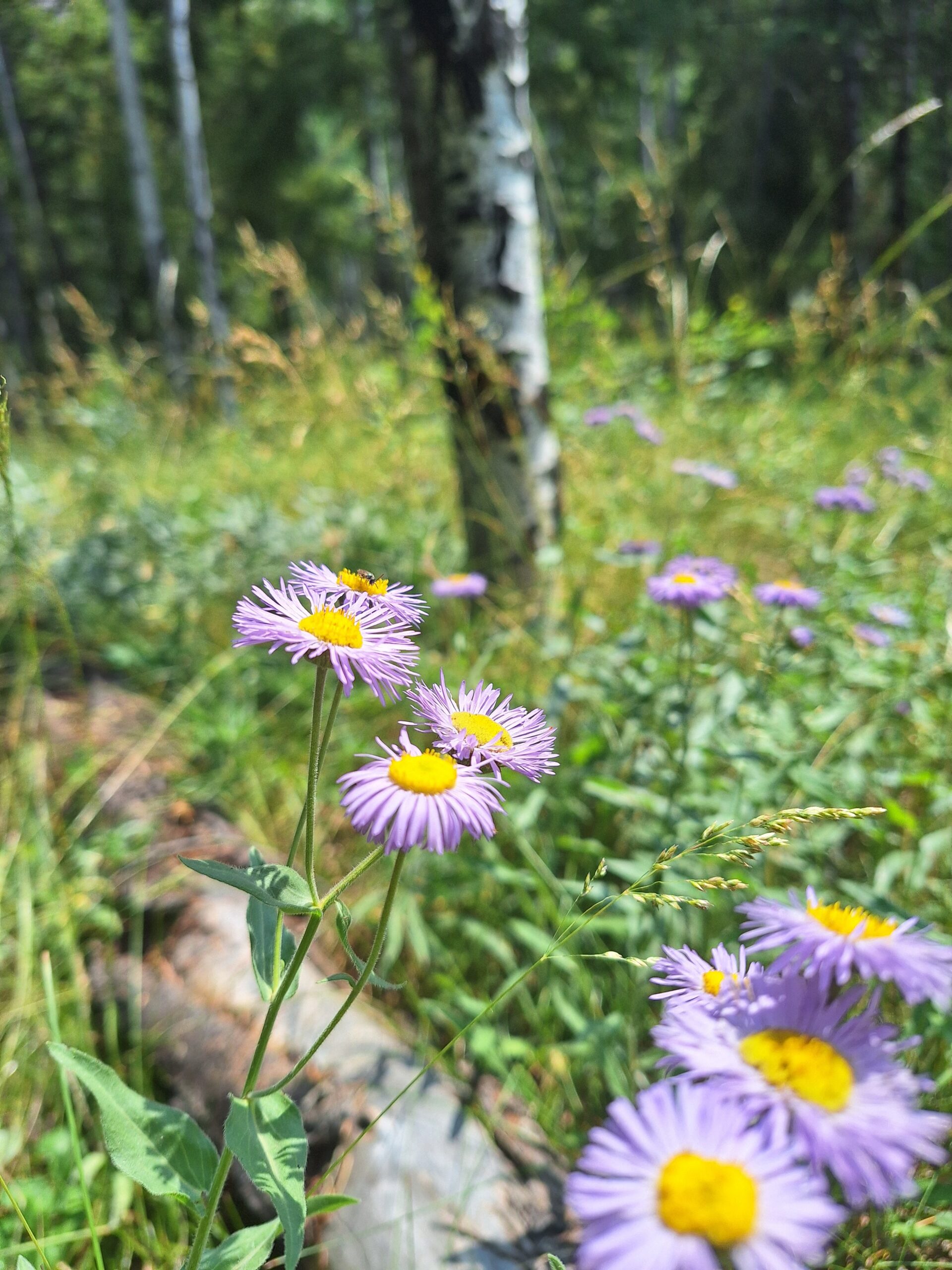
In this case, a pretty cool clue for where to look can be found in the common name! We’ve found many purple fleabanes that don’t look quite right when wandering through sagebrush, along lake shores, or up on rocky outcroppings; but when we find ourselves in stands of aspen, we find that the plants start to line up closer with our description of Aspen fleabane! That being said, there are still subtle distinctions between species that we have to watch out for—Erigeron subtrinervis, or Three-veined fleabane, looks very similar to Aspen fleabane and can also be found growing in stands of aspen, but instead of a smooth stem and leaves, it will have hairy stems and leaves. It’s a minute detail, but when we send our seeds to the seed nursery and extractory in Couer d’Alene, they’ll want to see a voucher specimen that fits the bill.
It’s tough to find what we need, but we’ve still got a moment before these tricky purple flowers go to seed. In any case, a shady, lush stand of aspens is always a great place to be, so I won’t mind the search!
